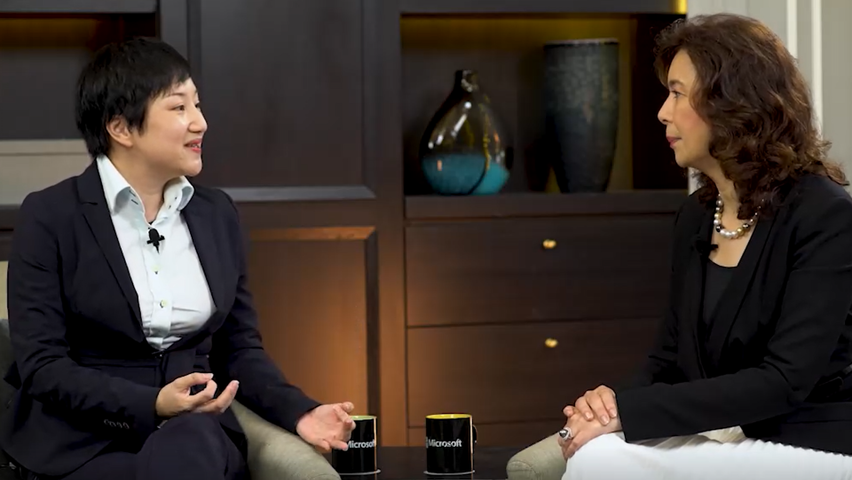
AEC Excellence Awards 2020 Finalists: Bold and Inspirational in a Year of Challenge
September 16, 2020MITRE ATT&CK: The Magic of Endpoint Protection
September 18, 2020Microsoft forecasts a hybrid new normal of work in Asia-Pacific

Microsoft and industry leaders assess key remote and hybrid trends shaping Malaysia’s workforce
As the COVID-19 pandemic continues to transform our daily lives, Microsoft, with research from TechRepublic Premium, looked into the impact the pandemic has had on the region’s legacy work styles, business operations and how it has accelerated an increase in overall technology adoption, realizing a hybrid new normal of work.
Through a qualitative research study, a whitepaper titled “Transitioning Asia-Pacific to a New Normal of Work” was conceived where businesses and thought leaders across industries – banking, healthcare, education, telecommunications, research, and professional consultancies – shared their insights on how organizational cultures in Asia-Pacific are evolving to a new paradigm of work.
“Traditional ways of working have become things of the past. We have gone from working in conference rooms to working in living rooms, adjusting to new blended work environments, while adopting a more digital way of working. Based on our findings, Microsoft Teams, our collaboration and productivity tool has clocked in about 200 million meeting participants each day, which equates to 4.1 billion minutes of meetings[1]. Those data points are a testament to the tremendous movement to remote work in the world,” said Michal Golebiewski, Chief Marketing & Operations Officer, Microsoft Malaysia.
“Closer to home, organizations in Malaysia have also had to adapt to the new ways of working. I believe this will continue to grow the demand for automation and collaboration tools as well as the shift to cloud computing, further accelerating Malaysia’s digital transformation agenda,” he added.
Emerging trends in the new normal of work
With COVID-19 accelerating the transition to new ways of working across Malaysia, some of the emerging trends that organizations need to be aware of as they plan for the new normal of work include:
- The risk of burnout: Organizations need to be mindful of the new perception of availability as the lines of work and personal life are blurring. Microsoft’s second Work Trend Index[2] found that beyond the typical 9am-5pm workday, Microsoft Teams chats outside of the typical workday (from 8-9 a.m. and 6-8 p.m.) have increased more than any other time during the day, between 15% and 23%. Weekend work is spiking as well – Teams chats on and Saturday and Sunday have increased over 200%. The hybrid approach in the future of work underlines the need to re-draw boundaries for out-of-hours contact.
- Career progression concerns: Organizations will need to reassess how performance is measured. Collaboration tools can measure activity but not the value that an individual has brought to the organization. Organizations are now finding that it is the “introverts” that are delivering while working from home, while the “star player” extroverts are no longer the center of attention.
- The need for flexibility and empathy: Research finds that nearly half (47%) of people working from home reported managing at-home distractions as a challenge[3]. Organizations as well as managers and teammates should do their part to not only help employees create a distraction-free environment but also be more flexible in the delivery of work and empathize with people’s challenges of working from home.
- Tech training and preparedness: As technology becomes a growing staple for employees, training will need to go hand-in-hand to unlock the full potential of hardware and software.
- Incorporating a social element: Organizations need to intentionally focus on policy and company culture rather than raw technology. The Microsoft Work Trend Index[4] released in April 2020 reflected this ongoing quest for human interaction – the number of people turning on video in Microsoft Teams meetings had doubled from before working from home became mainstream. Beyond enabling video conferencing, organizations need to find ways to encourage innovation, creative flow of ideas, and camaraderie that makes an employee feel that they are a valued part of an organization.
Technology and people upskilling as key enablers
Amid the pandemic, Microsoft found that while organizations have prioritized technology adoption to enable remote working environments and overall business transformation, the change was not driven through technology alone.
Weighing in on this, Dato’ Hamidah Naziadin, Group Chief People Officer, CIMB Bank said “COVID-19 had accelerated digital transformation that organizations have been driving. For organizations to remain competitive and resilient, however, focusing on technology alone is not sustainable. There is an urgent need to prioritize the alignment of people with the organization’s technology and business strategy. The people agenda must evolve promptly to drive home an agenda embracing digital transformation with reskilling and upskilling.” In 2018, CIMB had launched a 5-year digital transformation plan and “Future of Work” agenda, as part of a comprehensive effort to digitally empower its businesses and workforce with the set-up of 3D Academy to equip its workforce with 3D skills, that is, digital, data and design thinking skills.
With talent and skills development becoming a critical enabler for successful change efforts, over 60% of learning and development (L&D) professionals surveyed by LinkedIn said that reskilling is more of a priority now than ever before. There has also been an overwhelming increase of 130% more time spent being on LinkedIn Learning, which is equivalent to 4.8 million additional hours of learning time among students, job seekers, new higher, managers and even C-levels. Additionally, more L&D professionals now have a seat at the C-suite table, which is a jump from 24% in Oct 2019 to 62% in May 2020, signaling the importance of continuous learning to prepare for the new world of work.
To further help equip the workforce with imperative digital skills for success, Microsoft launched a global skilling initiative together with LinkedIn and GitHub. Through this program, more than 25 million people worldwide are able to access learning resources for free, particularly for high-demand roles of tomorrow.

The future of work is now and hybrid
In addition to the role of technology and people as key enablers, social and cultural environments also have a considerable impact on how organizations approach the new normal of work.
According to Dr. Esther Loo, Head of Organization Design & Effectiveness, Malaysia Aviation Group, the future of work will also see a break down in hierarchy. “Roles within an organization have become almost borderless, creating a much more fluid way of working. This agility is enabled through digital transformation and is made possible through upskilling and reskilling of employees and it has become an essential part of business sustainability in this new normal. As such, organizations today are increasingly working towards equipping their workforce with 3D skills, namely digital skills, data skills, and design thinking skills. These are critical skills that can help organizations leverage the potential of technology, thus driving business growth and resilience in today’s world of remote everything.”
Organizations also need to be vigilant against the emotional impact of these changes towards its people as it is a factor that can determine the success or failure of a digital transformation. Therefore, with people’s welfare as their top priority, Malaysia Aviation Group launched a mental health program to support employees’ wellbeing.
Meanwhile, countries with expensive real estate will find financial benefit in transitioning to a model where the office space is shared and cycled among employees that spend part of the time in the office, and other times working from home. This is the case for many offices in Malaysia already, who have returned to work on a rotational basis, keeping workforce capacity in the office at a minimal level to ensure adherence to national guidelines and regulations whilst keeping employees safe.
“Technology is fast reshaping and transforming the future of work. We saw two years’ worth of digital transformation happening in two months, and it is critical for organizations to review their digital workplace strategies to remain competitive and productive. These may include accelerating the process of developing policies enabling individuals to break away from the standard office hours, setting reasonable expectations around availability and relooking performance indicators,” said Michal.
The whitepaper was unveiled in Malaysia ahead of the upcoming Microsoft Malaysia HR Summit on 22 September 2020. The Summit will see industry leaders from CIMB, Malaysia Aviation and LinkedIn, sharing their thoughts on the future of work beyond COVID-19. To register for the Microsoft Malaysia HR Summit 2020, click here.
[1] https://www.microsoft.com/en-us/Investor/earnings/FY-2020-Q3/press-release-webcast
[2] https://www.microsoft.com/en-us/microsoft-365/blog/2020/07/08/future-work-good-challenging-unknown/
[3] CBS E-book: 250+ tips for telecommuting and managing remote workers
[4] https://www.microsoft.com/en-us/microsoft-365/blog/2020/04/09/remote-work-trend-report-meetings/
The post Microsoft forecasts a hybrid new normal of work in Asia-Pacific appeared first on Microsoft Malaysia News Center.

